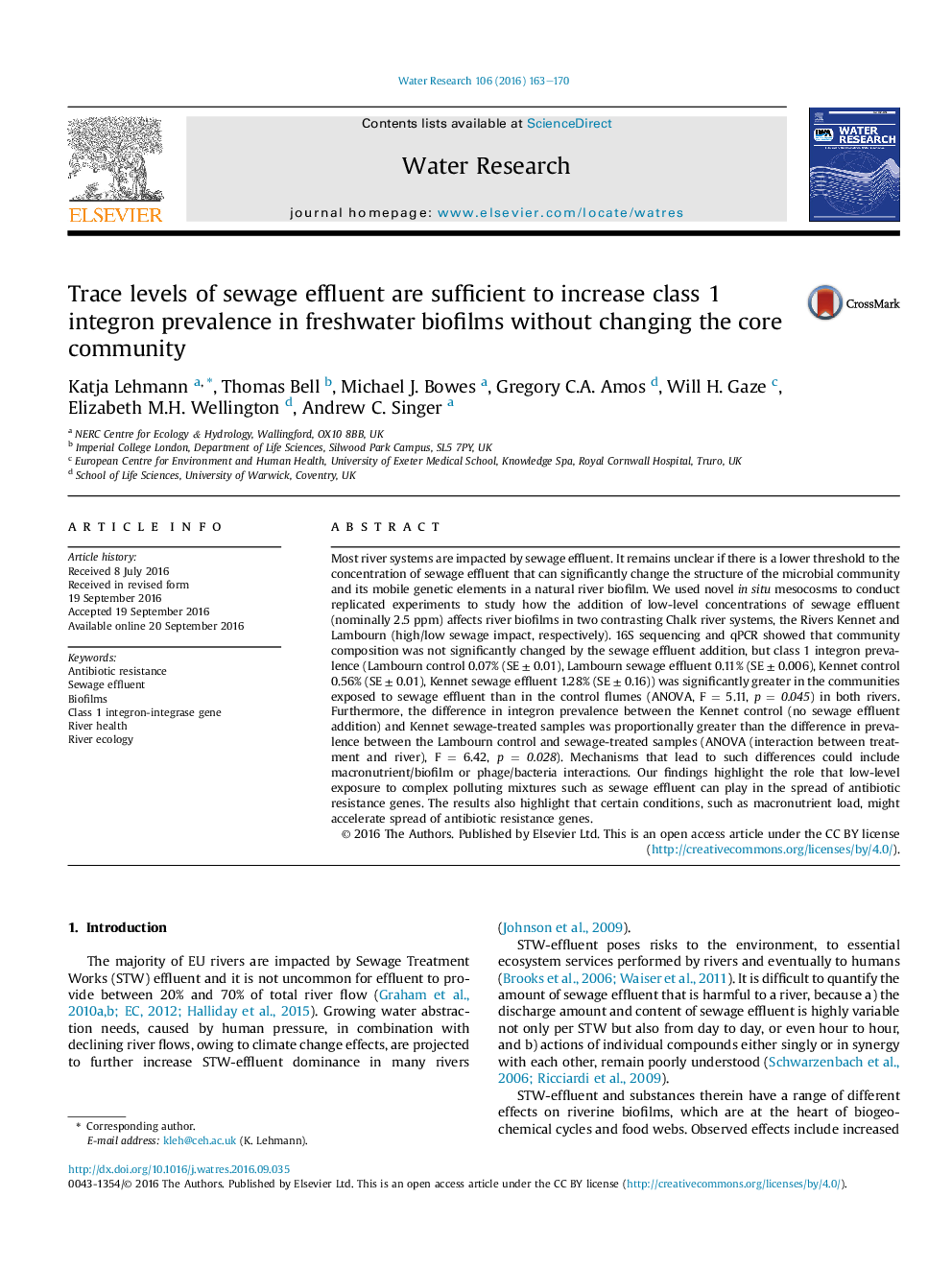| Article ID | Journal | Published Year | Pages | File Type |
|---|---|---|---|---|
| 6364194 | Water Research | 2016 | 8 Pages |
â¢We study effects of low-dose sewage effluent on periphyton composition and Intl1 prevalence.â¢Novel in-river mesocosms allow sufficient replication whilst maintaining natural conditions.â¢Low doses of sewage effluent significantly increase class 1 integron prevalence in periphyton.â¢Changes to Intl1 prevalence were more prominent in the more sewage-effluent impacted river.
Most river systems are impacted by sewage effluent. It remains unclear if there is a lower threshold to the concentration of sewage effluent that can significantly change the structure of the microbial community and its mobile genetic elements in a natural river biofilm. We used novel in situ mesocosms to conduct replicated experiments to study how the addition of low-level concentrations of sewage effluent (nominally 2.5 ppm) affects river biofilms in two contrasting Chalk river systems, the Rivers Kennet and Lambourn (high/low sewage impact, respectively). 16S sequencing and qPCR showed that community composition was not significantly changed by the sewage effluent addition, but class 1 integron prevalence (Lambourn control 0.07% (SE ± 0.01), Lambourn sewage effluent 0.11% (SE ± 0.006), Kennet control 0.56% (SE ± 0.01), Kennet sewage effluent 1.28% (SE ± 0.16)) was significantly greater in the communities exposed to sewage effluent than in the control flumes (ANOVA, F = 5.11, p = 0.045) in both rivers. Furthermore, the difference in integron prevalence between the Kennet control (no sewage effluent addition) and Kennet sewage-treated samples was proportionally greater than the difference in prevalence between the Lambourn control and sewage-treated samples (ANOVA (interaction between treatment and river), F = 6.42, p = 0.028). Mechanisms that lead to such differences could include macronutrient/biofilm or phage/bacteria interactions. Our findings highlight the role that low-level exposure to complex polluting mixtures such as sewage effluent can play in the spread of antibiotic resistance genes. The results also highlight that certain conditions, such as macronutrient load, might accelerate spread of antibiotic resistance genes.
Graphical abstractDownload high-res image (87KB)Download full-size image
